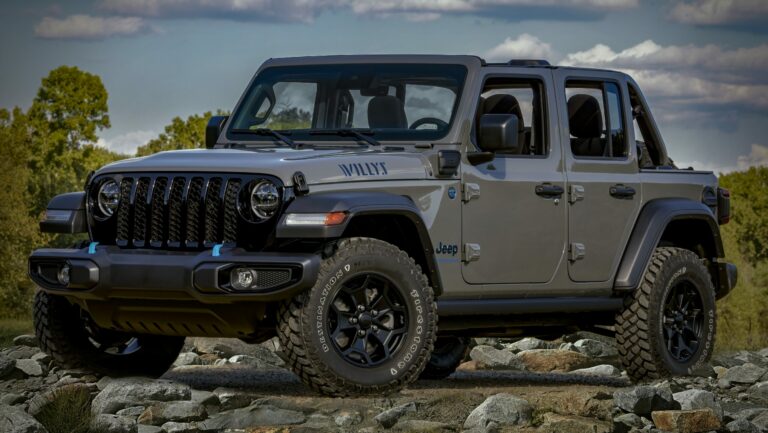Jeep Cherokee For Sale 1999: A Comprehensive Guide to Owning an XJ Icon
Jeep Cherokee For Sale 1999: A Comprehensive Guide to Owning an XJ Icon /jeeps.truckstrend.com
In the ever-evolving landscape of automotive design, some vehicles transcend their production years to become true legends. The Jeep Cherokee XJ, particularly the 1999 model, is one such icon. Known for its rugged simplicity, unparalleled off-road capability, and enduring reliability, a 1999 Jeep Cherokee for sale today represents more than just a used vehicle; it’s an opportunity to own a piece of automotive history that continues to prove its worth on and off the pavement.
This comprehensive guide delves into everything you need to know about the 1999 Jeep Cherokee. Whether you’re a seasoned off-roader, a DIY enthusiast, or simply someone seeking a dependable and characterful SUV, understanding the nuances of this specific model year will empower you to make an informed decision and embark on an exciting journey with your very own XJ.
Jeep Cherokee For Sale 1999: A Comprehensive Guide to Owning an XJ Icon
Why the 1999 Jeep Cherokee XJ? A Timeless Icon
The Jeep Cherokee XJ, produced from 1984 to 2001, is celebrated for pioneering the modern SUV. It struck a perfect balance between a traditional wagon and a full-size SUV, offering car-like handling with genuine off-road prowess. The 1999 model year holds a special place in the hearts of many enthusiasts for several compelling reasons:
- Peak of Refinement: By 1999, the XJ had undergone years of iterative improvements. It benefited from modern conveniences like OBD-II diagnostics and updated interiors, while retaining the core mechanical robustness that made it famous. It represents a sweet spot, avoiding some of the earlier model’s quirks while still being fundamentally simple and easy to work on.
- Legendary 4.0L Inline-Six Engine: The heart of the 1999 XJ is the venerable 4.0-liter "PowerTech" inline-six engine. Renowned for its bulletproof reliability, impressive torque, and longevity, this engine is arguably one of the best ever produced by Chrysler/AMC. With proper maintenance, it’s not uncommon for these engines to exceed 200,000 or even 300,000 miles.
- Robust Drivetrain Options: The 1999 XJ offered robust drivetrain options, including the highly reliable Aisin-Warner AW4 automatic transmission and the strong NP231 Command-Trac (part-time 4WD) or NP242 Selec-Trac (full-time/part-time 4WD) transfer cases.
- Unibody Construction: While some critics initially doubted its unibody construction for off-roading, the XJ proved them wrong. Its lighter weight and stiffer chassis contributed to excellent handling and surprising durability, making it incredibly agile on trails.
- Enduring Design: The XJ’s boxy, utilitarian design has aged gracefully. It’s instantly recognizable and maintains a classic appeal that newer, more rounded SUVs often lack.

For those seeking a blend of classic charm, serious capability, and mechanical simplicity, the 1999 Jeep Cherokee XJ stands out as an exceptional choice in the used car market.
Key Specifications and Features of the 1999 Jeep Cherokee
Understanding the core specifications of the 1999 XJ is crucial for potential buyers.
- Engine: 4.0L (242 cu in) AMC I6 (Inline-Six) PowerTech, rated at approximately 190 horsepower and 225 lb-ft of torque. Known for its low-end torque.
- Transmissions:
- AW4 Automatic: The most common and highly durable 4-speed automatic.
- AX-15 Manual: A 5-speed manual transmission, much rarer in 1999 models but sought after by some enthusiasts.

- Transfer Cases:
- NP231 Command-Trac: Part-time 4WD system (2H, 4H, 4L). Excellent for off-roading on loose surfaces.
- NP242 Selec-Trac: Full-time and part-time 4WD system (2H, 4H Full-Time, 4H Part-Time, 4L). Offers more flexibility for varied driving conditions, including paved roads in 4WD.
- Axles:
- Front: Dana 30 (high pinion).
- Rear: Primarily the Chrysler 8.25-inch axle (stronger than the Dana 35, which was also available on some earlier models). Look for the 8.25 for better durability, especially if you plan modifications.
- Trim Levels (Common):
- SE: Base model, often 2WD, manual windows/locks.
- Sport: More popular, often 4WD, power accessories, body-colored trim.
- Classic: Similar to Sport but with more chrome accents and interior amenities.
- Limited: Top trim, leather seats, power options, additional luxury features.
- Dimensions: Roughly 167 inches long, 70 inches wide, 64 inches tall.
- Towing Capacity: Up to 5,000 lbs (with proper equipment).
- Fuel Economy: Expect around 15-18 MPG combined, depending on driving style, modifications, and vehicle condition.
What to Look For When Buying a 1999 Jeep Cherokee: A Pre-Purchase Guide
Acquiring a 1999 Jeep Cherokee requires a keen eye and a systematic approach. Given its age, condition varies widely.
-
Rust: This is the XJ’s Achilles’ heel. Inspect thoroughly:
- Rocker Panels: Beneath the doors, a common rust spot.
- Floorboards: Check under the carpet for holes or soft spots.
- Frame Rails/Unibody: Look for severe rust or cracks along the main structural rails, especially near suspension mounting points.
- Rear Quarter Panels: Around the wheel wells and lower sections.
- Door Jambs and Hatch: Less critical but indicative of overall care.
-
Engine (4.0L I6):
- Leaks: Minor oil leaks (especially from the rear main seal) are common and often not critical, but heavy leaks indicate neglect. Check for coolant leaks (radiator, hoses, water pump).
- Overheating: Ask about overheating history. The XJ’s cooling system can be marginal if not maintained. Look for a clean, non-rusty coolant reservoir.
- Noises: Listen for knocking, ticking (might be lifters, not always serious), or loud accessory noises.
- Fluid Condition: Check oil (shouldn’t be milky) and coolant (should be green/orange, not rusty or sludgy).
-
Transmission (AW4 Automatic):
- Shifting: Should shift smoothly without harshness or slipping. Test all gears, including reverse.
- Fluid: Check the transmission fluid level and condition (should be red, not brown or burnt-smelling).
-
Transfer Case (NP231/NP242):
- Engagement: Test all 4WD modes (2H, 4H, 4L, and 4H Full-Time if NP242). Should engage smoothly without grinding.
- Leaks: Check for fluid leaks around the case.
-
Axles:
- Leaks: Inspect differential covers for leaks.
- Noise: Listen for humming or whining noises, especially at highway speeds, which could indicate worn gears or bearings.
-
Suspension and Steering:
- Sagging: Rear leaf springs commonly sag, leading to a "squatted" appearance.
- Bushings: Check control arm bushings, track bar bushings, and sway bar bushings for cracks or excessive play.
- Steering Play: Excessive play in the steering wheel could indicate worn tie rod ends, ball joints, or a loose steering box.
- "Death Wobble": While not exclusive to the XJ, this violent shaking of the front end at speed is a known issue caused by worn steering or suspension components. Ask if the owner has experienced or addressed this.
-
Brakes: Check for pulsating when braking, grinding noises, or a soft pedal.
-
Electrical: Test all lights, power windows, power locks, radio, and HVAC system. Window regulators are a common failure point.
-
Interior: Look for excessive wear, tears in seats, sagging headliner (common), and dashboard cracks.
-
Test Drive:
- Drive on varied terrain: highway, city, and if possible, a dirt road to test 4WD.
- Listen for unusual noises: clunks, squeaks, grinding.
- Pay attention to steering feel, brake performance, and engine/transmission behavior.
Common Issues and Solutions for the 1999 XJ
Despite its robust nature, the 1999 XJ has a few common quirks that are well-documented and usually manageable.
- Rear Main Seal Leak: Almost every 4.0L engine will eventually leak from the rear main seal. Often, it’s a slow drip and not catastrophic, but it’s a known issue.
- Solution: Replacement requires dropping the oil pan and sometimes the transmission, making it labor-intensive. Many owners just monitor fluid levels if the leak is minor.
- Cooling System Vulnerabilities: The 4.0L engine runs hot, and the stock cooling system can be prone to issues if not meticulously maintained. Plastic parts (radiator end tanks) can crack.
- Solution: Regular coolant flushes, upgrading to an all-aluminum radiator, ensuring the mechanical fan clutch is working, and replacing the water pump/thermostat as preventive maintenance.
- Rust: As mentioned, body rust is a primary concern.
- Solution: Prevention (undercoating, washing off salt), and professional rust repair for structural areas. For minor surface rust, wire brushing and rust encapsulating paint can help.
- Sagging Leaf Springs: The rear leaf springs tend to flatten over time, reducing ride height and load capacity.
- Solution: Add-a-leaf kits, new leaf springs, or shackle relocation brackets.
- "Death Wobble": This can be terrifying but is almost always caused by worn steering/suspension components.
- Solution: Diagnosing and replacing worn track bar, tie rod ends, ball joints, or control arm bushings. A quality steering stabilizer can help mask minor issues but doesn’t fix the root cause.
- Power Window Regulators: The plastic gears in the regulators can break.
- Solution: Aftermarket replacement regulators are readily available and relatively easy to install.
- Headliner Sag: The glue holding the fabric to the headliner board often fails.
- Solution: Re-gluing with specialized adhesive or replacing the headliner entirely.
Benefits of Owning a 1999 Jeep Cherokee
Beyond its mechanical aspects, owning a 1999 XJ offers several distinct advantages:
- Exceptional Durability and Reliability: The 4.0L engine and AW4 transmission are legendary for their longevity.
- Unmatched Off-Road Capability: Even stock, the XJ is highly capable. Its short wheelbase and narrow body make it agile on tight trails.
- Simplicity and Ease of Maintenance: The XJ is a mechanically straightforward vehicle. Most repairs and maintenance can be done by a competent DIYer with basic tools.
- Abundant Aftermarket Support: The XJ has one of the largest and most active aftermarket communities. Parts for repair, maintenance, and extensive modifications are readily available and often affordable.
- Affordability: The initial purchase price is relatively low, making it an excellent budget-friendly option for an off-road vehicle or a practical daily driver. Running costs are reasonable due to readily available parts.
- Strong Community: A passionate global community of XJ owners offers a wealth of knowledge, support, and camaraderie.
Upgrades and Modifications for the 1999 XJ
The XJ is a blank canvas for customization. Common upgrades include:
- Lift Kits: Ranging from 2-inch budget boosts to 6-inch-plus long-arm kits for serious off-roading.
- Tires: Larger all-terrain (AT) or mud-terrain (MT) tires for improved traction and ground clearance.
- Armor: Skid plates, rock sliders, and aftermarket bumpers protect critical components during off-road excursions.
- Lighting: LED light bars and auxiliary lights enhance visibility.
- Recovery Gear: Winches, recovery points, and high-lift jacks are essential for off-road adventures.
- Drivetrain Upgrades: Stronger axles, lockers, and lower gearing for extreme off-roading.
Concluding Summary: The Enduring Appeal of the 1999 Jeep Cherokee
The 1999 Jeep Cherokee XJ remains a highly sought-after vehicle for good reason. It represents the pinnacle of a legendary design, offering an unbeatable combination of rugged reliability, impressive off-road capability, and timeless appeal. Its simple mechanics, combined with vast aftermarket support and a passionate community, make it an ideal choice for anyone looking for a capable and engaging vehicle that can be easily maintained and modified.
While it’s crucial to approach a purchase with a thorough inspection, the rewards of owning a well-maintained 1999 XJ are substantial. It’s more than just transportation; it’s a versatile tool for adventure, a canvas for customization, and a reliable companion that embodies the spirit of freedom and exploration. Investing in a 1999 Jeep Cherokee is not just buying a car; it’s buying into a lifestyle.
Jeep Cherokee For Sale 1999: Estimated Price Guide
Please note that these are estimated price ranges. Actual prices can vary significantly based on location, exact mileage, specific trim level, options, maintenance history, and the seller’s urgency. A "modded" vehicle might command a higher price if the modifications are desirable and well-executed.
| Condition | Estimated Price Range | Key Characteristics |
|---|---|---|
| Poor | $1,500 – $3,500 | Significant mechanical issues (engine/transmission problems, major leaks), extensive rust (structural concern), non-functional essential systems (AC, power windows), very high mileage (250,000+), significant body damage. Best for parts or a full restoration project. |
| Fair | $3,500 – $6,500 | Runs and drives, but needs considerable work (suspension, brakes, electrical, minor rust repair). High mileage (180,000 – 250,000). Cosmetic flaws, interior wear. Suitable for a DIY enthusiast willing to invest time and money. |
| Good | $6,500 – $10,000 | Mechanically sound with all major systems functioning. Minor cosmetic flaws (dents, scratches, interior wear). Some minor rust. Well-maintained with service records. Mileage typically 120,000 – 180,000. Good daily driver or solid base for light modifications. |
| Excellent | $10,000 – $15,000+ | Exceptional condition for its age. Minimal to no rust. Flawless mechanicals, often with recent major maintenance (cooling system overhaul, suspension refresh). Clean interior and exterior. Lower mileage (under 120,000). Highly sought after by collectors or serious enthusiasts. |
Frequently Asked Questions (FAQ) about the 1999 Jeep Cherokee
Q1: Is the 1999 Jeep Cherokee reliable?
A1: Yes, the 1999 Jeep Cherokee is widely considered very reliable, especially due to its legendary 4.0L inline-six engine and robust AW4 automatic transmission. Proper maintenance is key, but these vehicles are known for their longevity.
Q2: What is the best engine in a 1999 Cherokee?
A2: The only engine offered in the 1999 Cherokee is the 4.0L (242 cu in) PowerTech inline-six. It’s universally praised for its durability, torque, and relatively simple design.
Q3: What are the most common problems with the 1999 Cherokee?
A3: Common issues include rust (especially rocker panels and floorboards), minor oil leaks (rear main seal), cooling system vulnerabilities (prone to overheating if neglected), sagging rear leaf springs, and occasional power window regulator failures. "Death wobble" can occur but is usually fixable by addressing worn steering components.
Q4: Is the 1999 Jeep Cherokee good for off-roading?
A4: Absolutely. The 1999 XJ is renowned for its excellent off-road capabilities right from the factory. Its compact size, solid axles, and capable 4WD systems make it a fantastic platform for trail driving, and it’s highly modifiable for more extreme off-roading.
Q5: Are parts still available for the 1999 Cherokee?
A5: Yes, parts availability is excellent. Due to the XJ’s long production run and immense popularity, both OEM and aftermarket parts are readily available and often affordable, making maintenance and repairs relatively easy.
Q6: What kind of fuel economy can I expect from a 1999 Cherokee?
A6: Fuel economy is not its strong suit. You can generally expect around 15-18 miles per gallon combined, varying with driving habits, vehicle condition, and any modifications (like larger tires or lift kits).
Q7: What’s the difference between Command-Trac (NP231) and Selec-Trac (NP242) transfer cases?
A7:
- Command-Trac (NP231): A part-time 4WD system with 2H, 4H, and 4L modes. 4H and 4L should only be used on loose, slippery surfaces as it locks the front and rear axles together.
- Selec-Trac (NP242): A more versatile system with 2H, 4H Full-Time, 4H Part-Time, and 4L modes. "4H Full-Time" allows the vehicle to be driven on paved roads in 4WD as it permits differential action between the front and rear axles, while "4H Part-Time" is similar to the NP231’s 4H.
Q8: How much does insurance cost for a 1999 Jeep Cherokee?
A8: Insurance costs vary widely based on your location, driving record, chosen coverage, and the specific insurer. Generally, older vehicles like the 1999 XJ tend to have lower insurance premiums compared to newer cars, especially for basic liability coverage, due to their lower replacement value.
![]()




